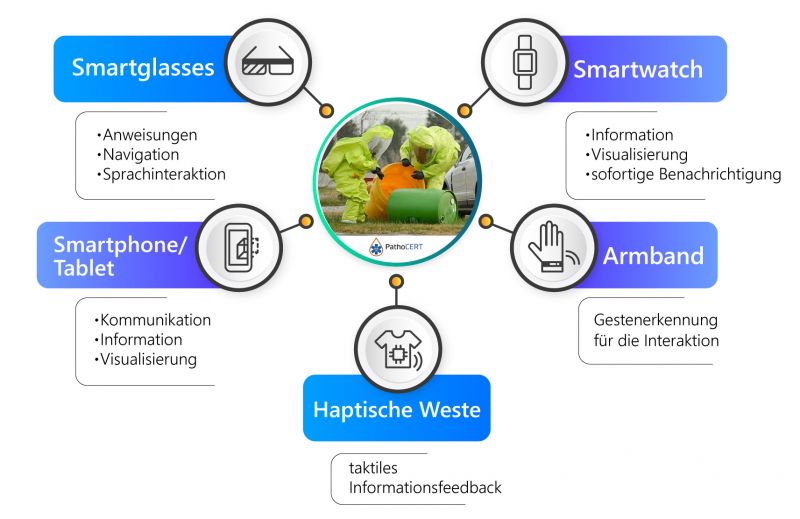Pathocert project defines new technologies for managing emergencies
Published on by Water Network Research, Official research team of The Water Network in Academic
Waterborne pathogens can be particularly fatal for first responders in emergency situations. In order to better protect them and to better cope with emergency situations, Fraunhofer IAO is part of a consortium to develop technologies and processes that will enable better control and help minimize risks The PathoCERT project is funded by the European Union under the Horizon 2020 program.

Floods are not only a technical challenge for rescue and emergency services, but also pose health risks. Bacteria, certain single- and multicellular organisms, but also viruses, spores and fungi can remain infectious or even multiply, even at low temperatures.
Danger recognized, danger averted: real-time detection of pathogens
Appropriate protective clothing is one way to protect people from coming into contact with water-based pathogens. It would be even more helpful, to detect the relevant pathogens to effectively tackle such situations. The Fraunhofer Institute for Industrial Engineering IAO along with 23 partners from the European Union and South Korea is developing solutions in a three-year project entitled Pathogen Contamination Emergency Response Technologies (PathoCERT) to handle water contamination emergencies. The aim is to develop innovative technologies that quickly and reliably identify water based pathogens and, by linking all relevant information, to be able to initiate measures for disaster management. These include solutions like sensor-based gloves that can detect pathogens in real time and transmit the data on for evaluation and provide relevant information to the first responder unobtrusively through a smartwatch, haptic vest or another wearable.
Technologies are only useful if they are also easy to use
To ensure that the PathoCERT technologies prove their worth “in the field,” the first-aiders taking part in the project are actively involved throughout the development process. Their feedback contributes to the development in the form of interviews, persona, context-of-use analysis, cognitive walkthroughs, focus groups, and usability tests. The PathoCERT technologies will be evaluated in five pilot studies taking place in Spain, the Netherlands, Cyprus, Greece, and Bulgaria. Project coordinator Prof. Christos Panayiotou of the KIOS Research and Innovation Centre of Excellence at the University of Cyprus emphasizes: “the PathoCERT project provides a great opportunity to create new and innovative tools that will help first responders in their fight against water contamination events.”
Fraunhofer IAO focusses on the user-centered approach for the project. It is important to keep the users for whom the technologies are being developed in mind, right from the very outset: What are their needs and requirements? What must an intelligent, easy-to-use user interface for smartphones, smart watches or wearables look like? How can virtual or augmented reality be leveraged to provide step-by-step instructions?
All information in one place and analysable via AI
In addition to the development of innovative sensor technologies, which should make it possible to detect water contamination within a few minutes, and the sensor-based gloves, that alert when in contact with contaminated water, the project consortium also seeks to integrate multiple sources of information and novel technologies. For example, analysis of water quality by autonomous drones that can take water samples combined with satellite images. Furthermore, it is planned to develop tools that receive information from “human sensors” via social media and to support first responders in case of contamination events in an urban environment. AI-based technologies should help assessing risks and predict developments based on data. The overall goal is to create an integrated system that connects the control center and first responders on-site and provides seamless access to all relevant information.
Taxonomy
- Waterborne Pathogens